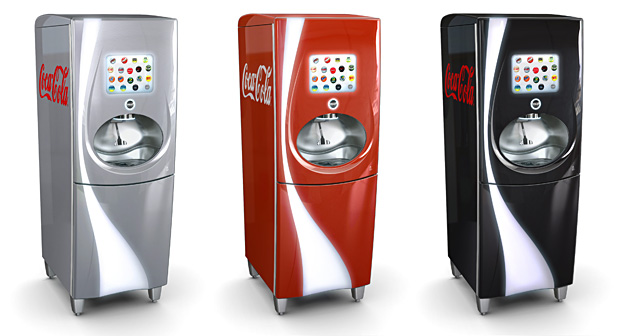 Then, competition arrived, and the simple pizza pie simply wasn’t
enough.
Delivery companies began a string of innovations. Hand-tossed,
think-crust, “Chicago-style,” stuffed crust and “Meat Lovers” were among
the pies du jour. Then one chain rolled out cheesy sticks. Another
offered various desserts. Then, a line of pasta – in plain tin pans, or
in bread bowls.
Then, competition arrived, and the simple pizza pie simply wasn’t
enough.
Delivery companies began a string of innovations. Hand-tossed,
think-crust, “Chicago-style,” stuffed crust and “Meat Lovers” were among
the pies du jour. Then one chain rolled out cheesy sticks. Another
offered various desserts. Then, a line of pasta – in plain tin pans, or
in bread bowls.
Most recently, the New Product Development team at Domino’s
posed a remarkable innovation: It created what it called a “better”
pizza. Aggressive marketing hyped its culinary research into its new
taste, and the company rolled out its new pie – seemingly same as the
old pie, only tastier.
Innovation in the delivery pizza category is as circular a process as
pizzas are round. This doesn’t include sit-down pizza restaurants, like
California Pizza Kitchen or the string of “coal-fired” pizza chains.
innovation DAILY
Here we highlight selected innovation related articles from around the world on a daily basis. These articles related to innovation and funding for innovative companies, and best practices for innovation based economic development.
Intel CEO on Innovation, Global Economy
Intel CEO Paul Otellini on hosting the International Science and
Engineering Fair and the global economy.
Re-Thinking Innovation
![]() Before the revolutionary upheavals of the late 18th century, political leaders did not always look kindly upon innovation. It implied a break with tradition, the introduction of newness into political and religious affairs, and was thus often viewed with mistrust. Such times, of course, are long past. Today’s political leaders actively seek innovation—albeit a narrower form of newness in technological innovation—as the basis for fostering jobs, prosperity, and economic growth.
Before the revolutionary upheavals of the late 18th century, political leaders did not always look kindly upon innovation. It implied a break with tradition, the introduction of newness into political and religious affairs, and was thus often viewed with mistrust. Such times, of course, are long past. Today’s political leaders actively seek innovation—albeit a narrower form of newness in technological innovation—as the basis for fostering jobs, prosperity, and economic growth.
The study of innovation has often happened at two disconnected units of analysis. Economists, sociologists, and political scientists have generally seen innovation from a high altitude where it is removed from the small-scale processes that, for instance, move discoveries from the lab bench into the marketplace. These scholarly models hold that academic research has over time become more interdisciplinary, problem-oriented, and entrepreneurial. As John Ziman argued in his 2000 book Real Science, research after 1960 became a “wealth-creating technoscientific motor for the whole economy.”
The Definition Of An Entrepreneur
If you encounter a new word, what do you normally do? Do you ignore it or try to see its definition in the dictionary? For smart individuals, they are certainly looking forward to the new meaning of the word. If you are engaged in business enterprises, perhaps you want to define entrepreneur. Are you an entrepreneur?
It is a specific definition of entrepreneur. According to most dictionaries, an entrepreneur an entrepreneur who finances or initiates emerging commercial enterprises is. Basically, he or she is the person that provides for the capital of the company. However, the provision of capital alone is not enough to be an entrepreneur. What is it?
It is because some people invest in a particular company prefers, but that person can be someone else take care of all business activities.
Are Your Customers on Your Team?

![]() For the start up, every person and every advisor you need to hire represents a critical commitment of your company's available time and cash. In essence, you trade those resources for the knowledge and skill (intellectual assets), contacts (social capital), and the pure energy, ideas, and actions you expect that person to bring to your budding organization.
For the start up, every person and every advisor you need to hire represents a critical commitment of your company's available time and cash. In essence, you trade those resources for the knowledge and skill (intellectual assets), contacts (social capital), and the pure energy, ideas, and actions you expect that person to bring to your budding organization.
But what if you could get some of same resources without having to give up any of your precious start-up funds?
You can - if you put your customers - and those who you'd like to have as customers - on your team! Here are three ways to start:
1. Stop thinking of customers as 'them'. Customers are stakeholders who can help you move and shape your vision. Try posing a provocative question that will trigger thoughtful responses. For instance, my company created a completely new way to predict how people perform in teams--but we were struggling to find a way to properly present it. So I started asking, 'Why do people say they want team players, and then hire people who aren't?' Instant reaction! We not only got some great feedback, but some of our customers even went out and recruited other customers for us!
ACTION ALERT: Please Urge Bipartisan Support for America COMPETES Reauthorization Act of 2010 in U.S. House
WHAT HAS HAPPENED: The full U.S. House of Representatives is likely to vote on reauthorization of the America COMPETES Reauthorization Act of 2010 as early as next Wednesday, May 13. ASTRA believes that bipartisan support for this vital legislation is important and most timely, given the nation's economic woes.
The full U.S. House of Representatives is likely to vote on reauthorization of the America COMPETES Reauthorization Act of 2010 as early as next Wednesday, May 13. ASTRA believes that bipartisan support for this vital legislation is important and most timely, given the nation's economic woes.
The America COMPETES Reauthorization Act of 2010 is a bill that lays the basis for sustained funding increases in our nation's often neglected science, engineering and technology resources for three key agencies: the National Science Foundation (NSF), the Department of Energy's (DOE) Office of Science, and the Department of Commerce's National Institute of Standards & Technology (NIST).
ASTRA has supported efforts like the COMPETES Act for a decade. Finally, the benefits of adequate federal R&D investments in our science and engineering ecosystems are being recognized across the political spectrum.
Republicans, Democrats and Independents in Congress have all voted for legislation like COMPETES in the past. That's because they realize that job creation, global competitiveness, innovation, STEM education, national security and other issues directly relate back to our country's federal R&D investments.
Now, more than ever, our R&D investments are needed to keep up with aggressive overseas competitors - whether they be governments or private entities determined to either widen their leads, or overcome the current position of U.S.-based industry, small businesses, academic institutions, and workers...
Please review our ASTRA's extensive materials on these topics. They provide fact-based reasons to support this widely-held and nonpartisan view. See: www.usinnovation.org and www.aboutastra.org
For specific details about what the COMPETES bill would do for the nation's science, engineering and technology infrastructure and workforce, see http://www.usinnovation.org/files/UpdateAmerica%20COMPETESforCVD2010.pdf
Brains, worms and computer chips have striking similarities
 (Santa Barbara, Calif.) -- -- An international team of scientists has discovered striking similarities between the human brain, the nervous system of a worm, and a computer chip. The finding is reported in the journal PloS Computational Biology today.
(Santa Barbara, Calif.) -- -- An international team of scientists has discovered striking similarities between the human brain, the nervous system of a worm, and a computer chip. The finding is reported in the journal PloS Computational Biology today.
"Brains are often compared to computers, but apart from the trivial fact that both process information using a complex pattern of connections in a physical space, it has been unclear whether this is more than just a metaphor," said Danielle Bassett, first author and a postdoctoral research associate in the Department of Physics at UC Santa Barbara.
The team of scientists from the U.S., the U.K., and Germany has uncovered novel quantitative organizational principles that underlie the network organizations of the human brain, high performance computer circuits, and the nervous system of the worm, known as nematode C. elegans. Using data that is largely in the public domain, including magnetic resonance imaging data from human brains, a map of the nematode's nervous system, and a standard computer chip, they examined how the elements in each system are networked together.
Did you say, "more private funding, please"?
 So...you need additional angel or venture funding.
So...you need additional angel or venture funding.
In the current economic climate, more companies have to hold on longer, and spend even more carefully, to survive until things improve. And, they will improve. They will improve...they will improve...they will improve. Repeat three times, three times a day and I'm sure our cosmic energy will combine to make it so.
In the meantime, if you find you need more investor funding to keep your promising enterprise going, where is the first place you should turn? Your existing angel or venture investors, of course. They have numerous reasons to invest in a follow-on round and there are many reasons that it is beneficial to you as well. The most obvious for both parties, is that you already know each other. Hopefully it will be unnecessary to re-familiarize your investors with your company. You've been providing quality, detailed, cross-functional investor updates on a regular basis right?
Medvedev touts creation of Skolkovo innovation hub

Russian President Dmitry Medvedev will personally keep an eye on the construction of a state-of-the-art innovation center in Skolkovo outside Moscow. A statement to this effect was made on Thursday by Viktor Vekselberg, head of the Russian section of a council responsible for overseeing the Skolkovo project. Vekselberg said that he earlier met with a handful of foreign businessmen and scientists, who signaled their readiness to contribute to the project’s implementation. Among them, ex-Intel chief Craig Barrett, who also agreed to oversee the construction of the Skolkovo innovation hub, which many have already called a Russian Silicon Valley.
10 Best States for Entrepreneurship and Small Business
The Small Business & Entrepreneurship Council’s “Business
Tax Index 2010” ranks the states from best to worst in terms of
the costs of their tax systems on entrepreneurship and small business.
The Index pulls together 16 different tax measures, and combines those
into one tax score that allows the 50 states and District of Columbia to
be compared and ranked. Here are this year’s top 10 state tax systems,
according to the study.

What Street Vendors Can Teach Us About Bootstrapping And Entrepreneurship
So me people are born wealthy enough to take the massive risk which funding a new business entails. Others get seed money from brilliant pitches, luck or connections.
me people are born wealthy enough to take the massive risk which funding a new business entails. Others get seed money from brilliant pitches, luck or connections.
And then, there's the rest of us.
Funding a business, or more precisely, risking losing money when starting a business, is the single largest obstacle for most entrepreneurs. Even good ideas can take time to fine-tune or pan out.
That's why I have the most respect for the 'street-stall entrepreneur' one finds in developing countries. This is the individual who starts out with absolutely nothing, and shamelessly sells any product they can from the street to make his living.
Meet Facebook's (Soon-To-Be) Billionaires
 Last we looked at the private markets where Facebook stock is traded, the company had an implied valuation of well over $22 billion.
Last we looked at the private markets where Facebook stock is traded, the company had an implied valuation of well over $22 billion.
That means lots of Facebook employees, ex-employees, investors and other stakeholders are, on paper, wealthy enough that their children and their children's children will never have to work.
And when Facebook finally IPOs sometime in 2011 or 2012, that paper wealth is going turn into spendable cash.
Government Offers More Cash For Small Green Tech Innovators
 If you’re in the green technology industry and are in need of
financial backing, now might be a good time to ask the U.S.
Department of Energy for a few bucks: around the same time the DOE distributed
$62 million among various concentrating solar power (CSP) projects,
DOE Under Secretary Kristina Johnson announced another $60 million will
be made available via the American
Recovery and Reinvestment Act to support innovations toward clean
energy technology being made by small businesses.
If you’re in the green technology industry and are in need of
financial backing, now might be a good time to ask the U.S.
Department of Energy for a few bucks: around the same time the DOE distributed
$62 million among various concentrating solar power (CSP) projects,
DOE Under Secretary Kristina Johnson announced another $60 million will
be made available via the American
Recovery and Reinvestment Act to support innovations toward clean
energy technology being made by small businesses.
Top Entrepreneurs Find and Nurture Innovators
 Innovation Question Entrepreneurs are usually highly creative and innovative, but many innovative people are not entrepreneurs. Since it takes a team of people to build a great company, the challenge is to find that small percentage of innovative people, and then nurture the tendency, rather than stifle it.
Innovation Question Entrepreneurs are usually highly creative and innovative, but many innovative people are not entrepreneurs. Since it takes a team of people to build a great company, the challenge is to find that small percentage of innovative people, and then nurture the tendency, rather than stifle it.
A while back I read a book titled The Rudolph Factor, by Cyndi Laurin and Craig Morningstar, which is all about finding the bright lights that can drive innovation in your business. The story most specifically targets big companies, like Boeing, but the concepts are just as applicable to a startup with one or more employees.
The core message is that real innovation and competitive advantage are more people-based than product or process-based. Every good entrepreneur needs a people-centric focus to ferret out creativity and innovation in his team, and to build a sustainable competitive advantage.
The Entrepreneurial Engineer
 The undergraduate offerings at Stanford University’s School of Engineering could be engaged in a tug of war.
The undergraduate offerings at Stanford University’s School of Engineering could be engaged in a tug of war.
On one side is the foundation of math, science and major-specific courses students need to earn a degree now, or four years from now. On the other, the skills, curiosity and bent toward problem solving that students will need in their first job and in the job they get 20 or 40 years into their careers.
But, with a rope between them, the battle would end up a draw, at least in the eyes of James D. Plummer, who has been the school’s dean since 1999. “What we’re trying to do in the engineering school is … taking the traditional picture of an engineering classroom,” he said at a university faculty meeting earlier this year, pointing at a black and white photo of students taking notes in a lecture hall, “and turning it into something that looks a little more like this” -- a man, in vivid color, bungee jumping over craggy terrain.
Boulder, Colo., a Magnet for High-Tech Start-Ups

BOULDER, Colo. — Sixty engineers, entrepreneurs and financiers were
sipping yerba mate tea at a coffee shop down the street from a
bong-and-lingerie store on a recent sunny Tuesday in Boulder, and
discussing how Boulder — usually seen as an enclave of hippies, marijuana
dispensaries and rock climbers — has become a hotbed of capitalism.
Experienced tech entrepreneurs and investors sat alongside people who had just moved to Boulder hoping to start a company in this small city, which is breeding tech start-ups at an attention-grabbing rate. In the first three months of the year, 11 Colorado tech start-ups raised $57 million in venture capital, solidifying Boulder’s place among the country’s up-and-coming tech centers.
“In Silicon Valley, you’re a small fish in a huge pond, and it didn’t seem as collaborative and a lot more corporate,” said Chad McGimpsey, who moved to Boulder a month ago and is now a regular at the twice-a-month coffee club. “Here, you’re a big fish in a small pond. Plus, there are the mountains.”
Supporting Entrepreneurs in Muslim Countries
 The World Bank estimates that 100 million new jobs will be needed in
the Middle East and North Africa over the next 10 years to keep the
region's unemployment rates—now as high as 13 percent for adults and
twice as high for young people—from climbing even higher. To meet the
needs of this region's rapidly growing population and put it to work
meeting the world's needs, there is no surer route than
entrepreneurship. That was the big takeaway at the first-ever Presidential
Summit on Entrepreneurship focused on the Muslim world, held at the
Ronald Reagan Building in Washington in late April.
The World Bank estimates that 100 million new jobs will be needed in
the Middle East and North Africa over the next 10 years to keep the
region's unemployment rates—now as high as 13 percent for adults and
twice as high for young people—from climbing even higher. To meet the
needs of this region's rapidly growing population and put it to work
meeting the world's needs, there is no surer route than
entrepreneurship. That was the big takeaway at the first-ever Presidential
Summit on Entrepreneurship focused on the Muslim world, held at the
Ronald Reagan Building in Washington in late April.
Attending the event and meeting some of the 275 delegates from over 50 countries with large Muslim populations gave us hope that business could indeed help bridge the gap between the Muslim and non-Muslim worlds. Apart from their affiliation with Islam, these entrepreneurs—nearly half of whom were women—had something else in common: They represent a generation of business people intent on charting a new course for economic and social change in and beyond their countries. Addressing highly charged political problems in this region remains paramount, but the folks we met were searching for a more tolerable life. Their activities hold the potential to help defuse, if not circumvent, some of the political tensions and lead to improved stability and security.
Venture Returns Rose 3 Percent Last Year, But Longer Term Returns Are Still Hurting
 Venture capital returns improved
in the fourth quarter of 2009, according to the Cambridge Associates
U.S. Venture Capital Index, the performance benchmark of the National
Venture Capital Association. Fourth quarter returns saw a 3.3
percent rise, ending the year with a 3 percent return overall, on
average.
Venture capital returns improved
in the fourth quarter of 2009, according to the Cambridge Associates
U.S. Venture Capital Index, the performance benchmark of the National
Venture Capital Association. Fourth quarter returns saw a 3.3
percent rise, ending the year with a 3 percent return overall, on
average.
The key words here are “short-term improvements,” however, because performance continued to decline in the 5- and 10-year periods ending in the quarter.
Council on Foundations 2010: Networks, Not Ideas, Drive Innovation
 Despite popular perception, it's not one single product, epiphany or "a-ha" moment that drives innovation. From Thomas Edison's light bulb to Apple's multi-functional personal devices, innovation happens when a network adapts and executes a new approach or technology.
Despite popular perception, it's not one single product, epiphany or "a-ha" moment that drives innovation. From Thomas Edison's light bulb to Apple's multi-functional personal devices, innovation happens when a network adapts and executes a new approach or technology.
Those were key lessons imparted by Andrew Hargadon of the University of
California, Davis, speaking on April 25 at a mini-plenary session on
social innovation and philanthropy at the start of the Council on Foundations' 2010 Annual Conference.
This was the kickoff to the conference's social innovation track, which
also included sessions with Chip Heath, co-author of the book Switch, and Gabriel Kasper of the Monitor
Institute.
Coke's Freestyle Machines Ready to Rock Tongues With 104 Flavors

Coca-Cola is about to light the rocket beneath a project that may,
with luck, slightly reinvent the brand for the 21st Century: It's ready
to take its amazing Freestyle drinks makers mainstream, with 104
user-controlled flavors.
We've mentioned the Coke Freestyle device several times before--it's hard not to as it's so innovative, and involves cooperation from some seriously big names in design (Pininfarina and Dean Kamen to name but two.) The device is essentially a ground-up reinvention of the decades-old free-standing drinks dispenser, with its crates of flavor syrup, chilling equipment and water supply, ready to spew out two or three varieties of cold carbonated drinks. Unlike these old systems, which have more in common with the kind of complex plumbing you'd expect aboard a 1940's submarine, Freestyle's electronic systems have a design that may have fitted aboard Captain Picard's USS Enterprise, right down to the colorful touchscreen interface. Inside it has a flavor-dispensing system inspired by medical use of inkjet technology, with huge dexterity in adding flavors to the outgoing drinks, and even no need for taste-diluting ice as it can super-chill the beverage before delivery if that's how you want it.

